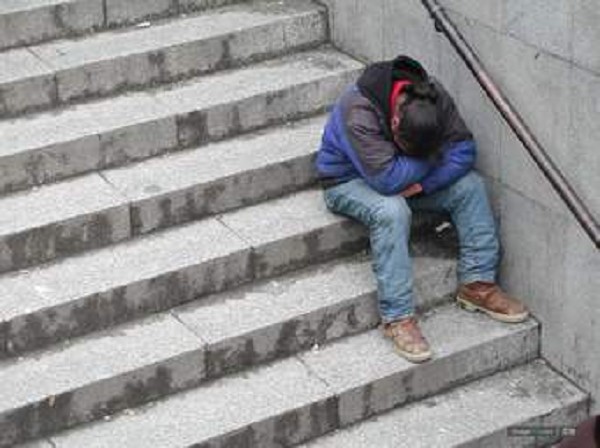| Home | Community | Arts/Theater | Business | Schools | Government | Downtown |
| Local News | Opinion | Health/Fitness | Events | Groups & Non-Profits | ||
HOMELESS STUDENTS: Bay City's Number Rises to 170, Makes State List
|
||||||||||||||
| Printer Friendly Story View |

Among the most pressing problems facing Michigan is the rising population of homeless students, including Bay City.
However, the problem is not insoluble and districts are coping with it as a component of widespread poverty. The good news is that plans are in place and school officials are seeking solutions.
For the 2017-18 school year, the homeless student population in the Bay City School District was 170 students, up from 127 the previous year. The total population was 7,730 students.
According to the Michigan Department of Education, Bay City is among the state's top 50 school districts in numbers of homeless students.
Michigan has one of the largest populations of homeless students in the United States. In 2015-16 school year, Michigan ranked sixth among states for the most homeless students. By comparison, Michigan ranked 10th for overall student enrollment.
Homelessness in Michigan is a statewide issue impacting children in rural, suburban and urban areas. Ninety-four percent of Michigan's 540 local school districts reported students struggling with homelessness and housing instability in their area.
Nationwide, over 1.35 million children and youth experience homelessness each year. These children and youth face challenges that include:,
Children and youth who are homeless face additional educational challenges when they have disabilities.
More than 13 million U.S. children live in poverty, and the nation is failing to equip many children, particularly in communities of color, with what they need to reach their full potential.
"America's children are one quarter of our population and 100% of our future," said Casey Foundation President and CEO Lisa Hamilton. "All of the 74 million kids in our increasingly diverse country have unlimited potential, and we have the data, knowledge and evidence to create the policies that will help them realize it. It's incumbent on us to do just that.?
What help is there for help families facing homelessness?
The McKinney-Vento Act (federal law) gives children and youth experiencing homelessness the right to enroll in school immediately, even without documents normally required for enrollment, and to stay in one school even if they are changing residences. Every school district has a local homeless education liaison, who must identify and serve children and youth experiencing homelessness.
Michigan Department of Education homelessness webpage has many links, lists, and information items, as well as a list of local contacts.
The direct number for the coordinator office in Lansing is 1-517-241-6974.
Children need stability to thrive, but for the more than 36,000 children in Michigan's elementary, middle, and high schools who face homelessness, stability often is elusive. Under federal education law all children and youths who "lack a fixed, regular, and adequate nighttime residence" are homeless. These children not only lack a stable place to call home, they are more likely to transfer schools, have long commutes, struggle with poor health, and be chronically absent than their non-homeless peers.1 All of these daily challenges place homeless students at a greater risk for not meeting grade-level standards and for dropping out of school.
Recent research here in the State of Michigan has shown homelessness among children to be a key factor predicting student achievement in both rural and urban areas,3 yet little attention has been given, thus far, to understanding where homeless students in Michigan attend school and how their needs might differ depending on their geographic location.
This map seeks to fill that gap so policymakers and local stakeholders can begin to think about the impact of homelessness in their area and to identify resources to support some of the state's most vulnerable children. Data for this brief comes from 2015-16 school year administrative records collected by every school under the mandate of the Federal McKinney-Vento Act, a law that guarantees homeless students' right to an education.
###
| Printer Friendly Story View |

|
Prior Article
March 5, 2025 by: Stephen Kent St. Patricks Parade 2025 - IT's TIME |

|
Next Article
February 10, 2020 by: Rachel Reh Family Winter Fun Fest is BACC Hot Spot for 2/10/2020 |
|
|

Dave Rogers |
|
|
|
Printer-Friendly Story View
0200 Nd: 05-07-2025 d 4 cpr 1
12/31/2020 P3v3-0200-Ad.cfm
SPONSORED LINKS
12/31/2020 drop ads P3v3-0200-Ad.cfm
